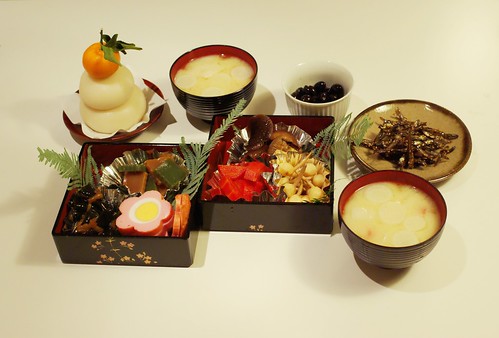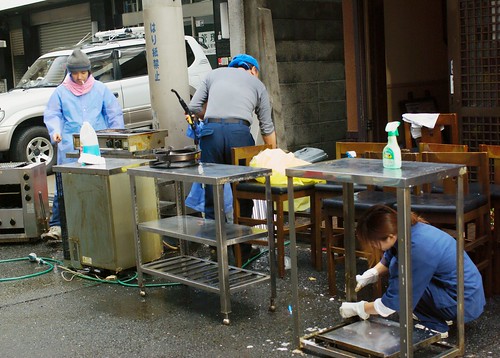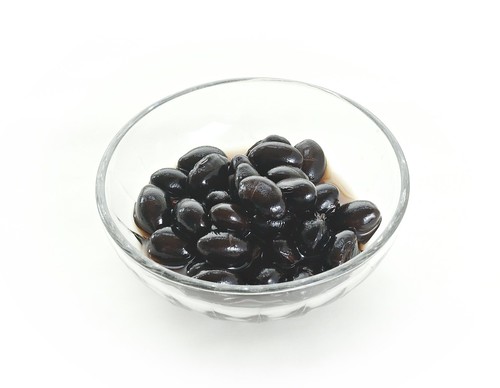The nice thing about having a real New Year holiday is how neatly you can fit a lot of symbolism into it - finishing things up before the big break; starting things anew after. Both households and companies tend to do a major housecleaning before the holiday; smaller shops and restaurants may close up completely and spend a day cleaning the whole place, top to bottom. Then, after the New Year, you can start up again in fresh, clean offices and shops.
The New Years food (called "osechi ryouri") is a reflection of this. It is cold food, prepared before the new years eve but eaten afterwards. Unlike Europe you do not have a feast on New Years eve in other words, though some people with big appetites and little patience cheat a bit and start on the osechi ryouri after midnight rather than wait to the next morning. People can spend sometimes a week beforehand making various traditional and not-so-traditional dishes, in order to (theoretically) not have to cook at all for a few days in the beginning of the new year.


Huge numbers of people were milling in Kuromon market, buying up ingredients for the New Years holiday. Fugu - the famed poisonus-but-safe fish - was being sold everywhere. Not my favourite; remove the "it can kill you!" bit (which is rather hyped) and it's a nice but way overpriced firm white-meat fish.
We did not win ready-made osechi ryouri this year for some inexplicable reason, so we made our own. It's fun and you get to eat only food you like. We bought a lot of the food of course (nobody makes their own kamaboko or konnyaku, though it would be fun to try once), but we did make kuromame, homemade soba (buckwheat noodles - I'm making a separate post about that) and XXX among other things. The kuromame ("black bean") turned out really well; it is a kind of dried gray bean that is soaked, then simmered in a dark soy and mirin-based sauce for a day or so together with a rusty nail (the rust helps turn them black). We had to scour a torn down building nearby to find a suitable nail, actually - pre-rusted nails are not a common article in kitchen supply-stores it seems. We've saved the nail for next year.

Our New Years food. The tower thingy on the upper left is mochi (sticky rice) and a mikan, and is a traditional decoration. The miso soup is also traditional style, with a very light, sweet kind of miso, root vegetables and mochi (which manages to kill people every year). The flower-like slices on the bottom left is kamaboko (baked fish paste - think "fiskbullar" for Swedish speakers) made with a boiled egg in the center. On the upper right there's kuromame (black beans) and gomame - dried fish sauteed in soy sauce, mirin and sake. Gomame, by the way, is possibly my favourite thing on this table.



No comments:
Post a Comment
Comment away. Be nice. I no longer allow anonymous posts to reduce the spam.